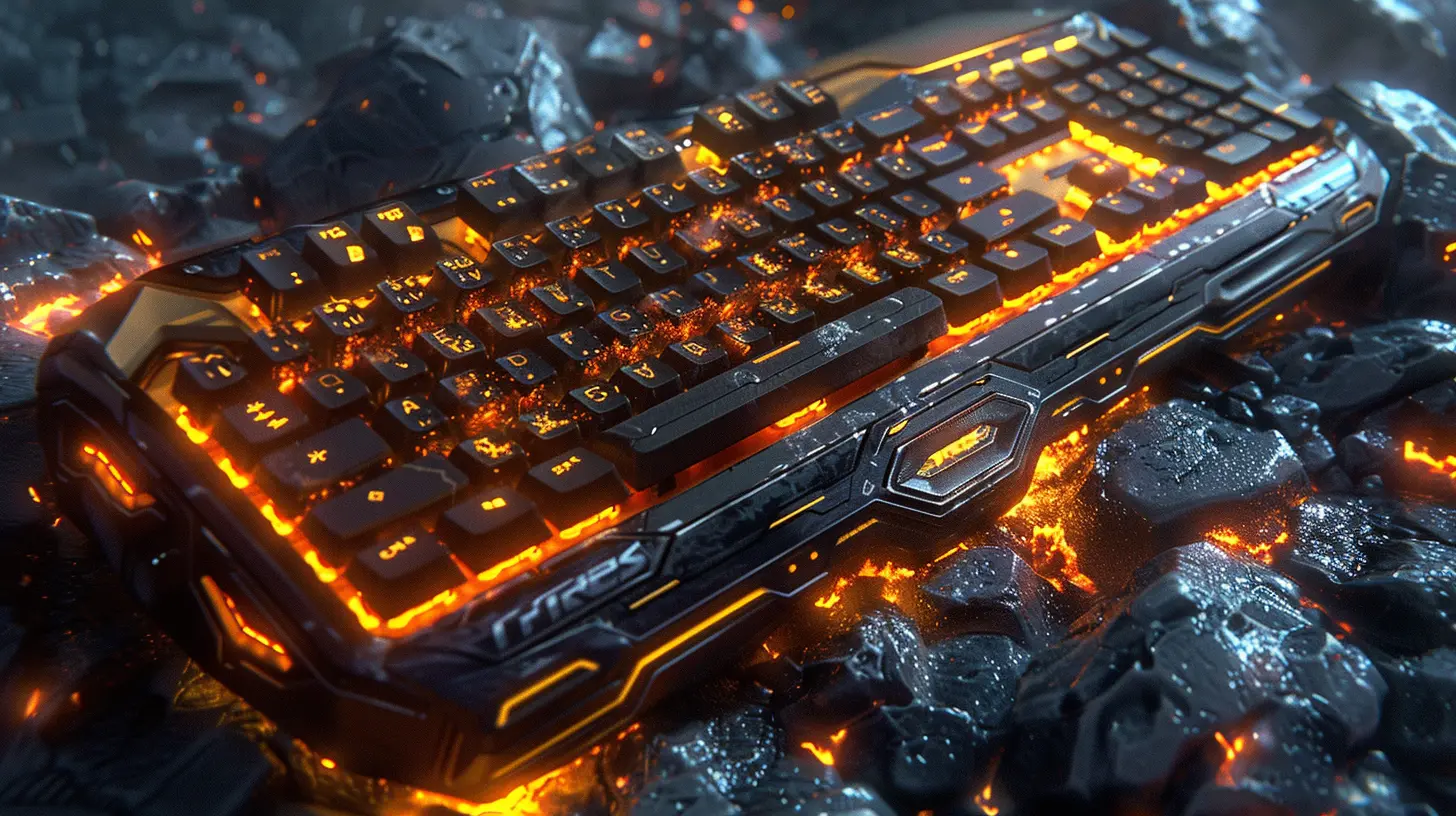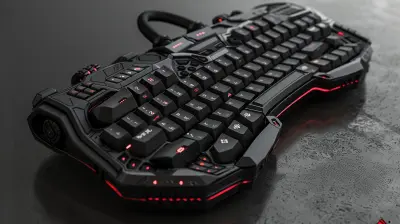Setting Up Hotkeys and Macros for Competitive Play
27 July 2025
If you’ve ever watched a top-tier gamer’s hands fly across a keyboard like they’re composing a chaotic symphony, you’ve already seen the power of hotkeys and macros in action. Whether you're trying to climb the ranked ladder in your favorite shooter, out-micro your opponents in an RTS, or gain the upper hand in an MMO raid, setting up hotkeys and macros can be the secret sauce that separates casual play from competitive mastery.
Let’s cut through the noise and dive into how you can actually set these up the right way—without melting your brain in the process.
What Are Hotkeys and Macros?
Before we go all-in, let’s break things down.Hotkeys are shortcuts—keyboard or mouse button combinations that perform specific actions. Instead of clicking through three menu layers to open your map or issue a command, a hotkey lets you do it instantly.
Macros are strings of commands tied to a single keypress. Think of them like hotkeys on steroids. Instead of just jumping or crouching, a macro could make your character switch weapons, throw a grenade, and crouch—all with one button.
Sounds like cheat codes? They’re not. They're legit tools, built into most games (or your hardware), designed to streamline your gameplay.
Why Bother With Hotkeys and Macros?
If you're serious about upping your game, you can’t afford to ignore this.- Speed: Every microsecond counts in competitive play. Hotkeys let you act faster—simple as that.
- Efficiency: You can focus on strategy instead of fumbling with commands.
- Consistency: Once your muscle memory kicks in, you’ll make fewer mistakes under pressure.
Still not convinced? Imagine trying to play a piano symphony with just one finger. That’s what playing without hotkeys feels like.
Step 1: Understand Your Game Mechanics
Not all games benefit equally from macros or hotkey customizations. You’ve got to tailor your setup to your game’s genre and mechanics.- FPS (First-Person Shooters): Think reaction time. Hotkeys for grenade throws, quick-switching weapons, or leaning left/right can be game-changers.
- RTS (Real-time Strategy): Macros for unit groups, base commands, and build orders.
- MOBA (Multiplayer Online Battle Arenas): Hotkeys for item activation, skill shots, and quick pings.
- MMORPGs: Oh boy, this is macro heaven. Combat rotations, buff/debuff timers, consumable usage—all can be macro’d to perfection.
So first up—study your game. Know what actions you constantly perform. Those should be your hotkey/macro targets.
Step 2: Identify Your Most Frequent Actions
Let’s be real—if you’re always hitting five different keys to do a basic combo, you’re wasting time (and probably some brain cells). Start by answering these questions:- What do I do constantly in matches?
- Are there any mechanical bottlenecks that trip me up?
- Do I ever forget to use abilities/items I should be using more?
Write down your top 10-15 most used actions. These will guide your hotkey setup.
Step 3: Customize Your Layout for Comfort
This is where your setup becomes your setup. Your comfort matters more than default bindings. Everyone’s hands are different. What works for Shroud won't necessarily work for you.Pro Tips for Layout Customization:
- Keep everything close to your WASD. You should never have to lift your hand completely off.- Use your mouse buttons wisely. Games like Fortnite or Valorant benefit from thumb buttons for building or quick-melee attacks.
- Avoid pinky strain. Don’t overload the Shift, Ctrl, or Alt keys with critical actions.
- Test ergonomic angles. If you’re stretching to reach something, remap it.
Comfort leads to consistency. If it feels wrong, it probably is.
Step 4: Start Simple With Macros
Macros can get crazy if you let them. But to start, don’t overdo it.A Simple Macro Example:
In an MMO like WoW, you could create a macro that casts two spells in sequence:
/cast Spell One
/cast Spell Two
Bind that macro to your "1" key. Now, you save one extra press every time you use your basic combo. Nice, right?
Keep These in Mind:
- Delay macros sparingly: They’re risky in fast-paced PvP.- Avoid over-reliance: Don’t macro your entire rotation—you’ll become predictable or clunky.
- Check for legality: Some games restrict or ban macro use in competitive settings.
Start small. You can always add complexity later.
Step 5: Practice, Practice, Practice
This part’s huge. Don’t expect instant results just because you reassigned your reload key to “R” instead of “E.” Your fingers need time to adapt. That’s where muscle memory comes in.How to Train Your Muscle Memory:
- Play unranked or bot matches with your new setup.- Stick with it for at least a week—don’t keep changing keys.
- Make flash cards (yes, old-school ones) listing your hotkeys and review them.
- Record your gameplay and spot where you hesitate or misclick.
Once it becomes second nature, you’re golden.
Step 6: Use Software Tools for Extra Edge
There are killer tools out there that help you create and manage hotkey/macro profiles. Don’t sleep on these.Recommended Software:
- AutoHotKey (AHK): Great for complex macros. Requires scripting knowledge though.- Razer Synapse / Logitech G Hub / Corsair iCUE: If you’ve got gaming peripherals, use their software! They let you bind actions to extra mouse buttons or even create game profiles.
- ReWASD: Especially good for controller customization.
Tinker around with these to find your comfort zone. But remember: with great power comes great responsibility—don’t automate so much that it becomes unfair (or bannable).
Step 7: Sync Your Setup Across Devices
If you play across multiple PCs or use a laptop on the go, consistency in your hotkeys/macros matters.- Use cloud sync features in your peripheral software.
- Keep macro scripts or hotkey layout screenshots saved in a Google Drive folder.
- Consider portable apps on a USB if you game in different locations.
Trust me, nothing's worse than showing up at a LAN or someone else's rig and having to guess which key does what. Be prepared.
Step 8: Re-Evaluate Regularly
Your gameplay evolves. So should your hotkey layout and macros.Every couple of months, ask yourself:
- Are there actions I’m doing more often now?
- Is there something I never use anymore?
- Am I developing bad habits from macro overuse?
It's okay to tweak your setup. Pro players do it all the time. The goal is to adapt your tools to your current playstyle, not the other way around.
Bonus Tips for Competitive Edge
Let’s wrap up with a few spicy tips you can throw in your toolkit:- Color-code your keycaps or use textured ones to find them faster.
- Use dual-bindings where allowed (like mapping an action to both “E” and mouse button 3).
- Consider foot pedals. Yes, they exist—and some pros use 'em for push-to-talk or complex inputs.
- Keep macros clean and readable. Future you will thank you when you need to debug something mid-tournament.
Final Thoughts
Setting up hotkeys and macros isn’t about being fancy. It’s about playing smarter, not harder. It’s like upgrading from a rusty bicycle to a slick mountain bike—you’ll go faster, smoother, and with less effort.You don’t need to be a tech wizard or a full-time gamer to start reaping the benefits. Just take it step by step, tweak as needed, and before you know it, your fingers will be dancing across your keyboard like they’ve got a mind of their own.
So go ahead—open up your settings, start mapping those keys, and unlock the efficiency you’ve been missing.
Game on, legend.
all images in this post were generated using AI tools
Category:
Gaming TipsAuthor:

Leif Coleman
Discussion
rate this article
1 comments
Mindy McCaw
Hotkeys and macros can elevate your gameplay—don’t underestimate their impact in competitive scenarios!
August 3, 2025 at 5:04 AM

Leif Coleman
Absolutely! Efficient use of hotkeys and macros can significantly enhance your performance and give you a competitive edge.


